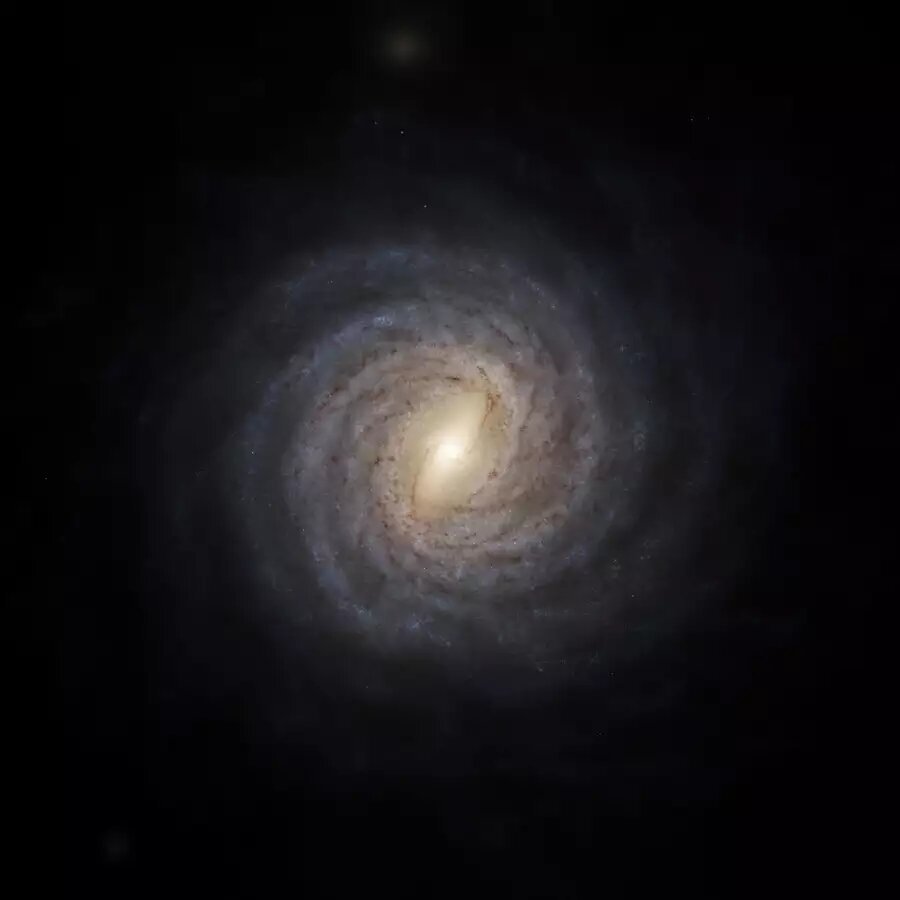Artist’s impression of the Milky Way, as seen from the outside. The study described here goes one step further, showing what results extragalactic astronomers would obtain if they studied our Milky Way from afar. Credit: Stefan Payne-Wardenaar
Researchers from the Max Planck Institute for Astronomy have reconstructed the chemical composition of our Milky Way galaxy as it would appear to alien astronomers observing from a distance. This study allows for a new way to compare our home galaxy with other distant galaxies that we observe. The findings suggest that while the Milky Way is unusual in terms of its chemical composition, it is not unique.
When we observe distant galaxies, we can determine their shape and spectrum. But what would our own galaxy look like to a distant, alien astronomer? This seemingly simple question is actually quite complex. Earth-based astronomers have developed sophisticated methods to determine a galaxy’s properties, and alien astronomers would likely have a similar understanding of the Milky Way.
Jianhui Lian, lead author of the study published in Nature Astronomy, explains the importance of comparing our galaxy to others: “Finding ways to compare our home galaxy with more distant galaxies is what we need if we want to know whether the Milky Way is special or not.”
Astronomy has made significant progress in the past decade in the study of our home galaxy. Surveys such as APOGEE have provided information on the chemical composition, physical properties, and motions of millions of individual stars in the Milky Way. Additionally, the Gaia spacecraft has tracked the brightness, motion, and distance of billions of stars. There is also better data available for distant galaxies, including the MaNGA survey which has studied thousands of galaxies in depth. Furthermore, modern simulations of galaxy formation and evolution have contributed to our understanding.
Lian and her colleagues set out to reconstruct how alien astronomers would observe the abundance of metals in the Milky Way. They used data from the APOGEE survey and combined it with knowledge of dust and star properties to accurately determine the distribution of stars in our galaxy.
The results showed that the average metal content of stars increases as you move closer to the galactic center, then decreases further out. This trend is seen in stars of different age groups. Comparing these findings to other galaxies, the researchers discovered that the Milky Way is unusual but not unique in terms of metal distribution.
The study raises questions about why the Milky Way has these distinctive properties and what factors contribute to them. Further research is needed to fully understand the complexities of our home galaxy and its place in the universe.
Denial of responsibility! SamacharCentrl is an automatic aggregator of Global media. In each content, the hyperlink to the primary source is specified. All trademarks belong to their rightful owners, and all materials to their authors. For any complaint, please reach us at – [email protected]. We will take necessary action within 24 hours.

Shambhu Kumar is a science communicator, making complex scientific topics accessible to all. His articles explore breakthroughs in various scientific disciplines, from space exploration to cutting-edge research.


